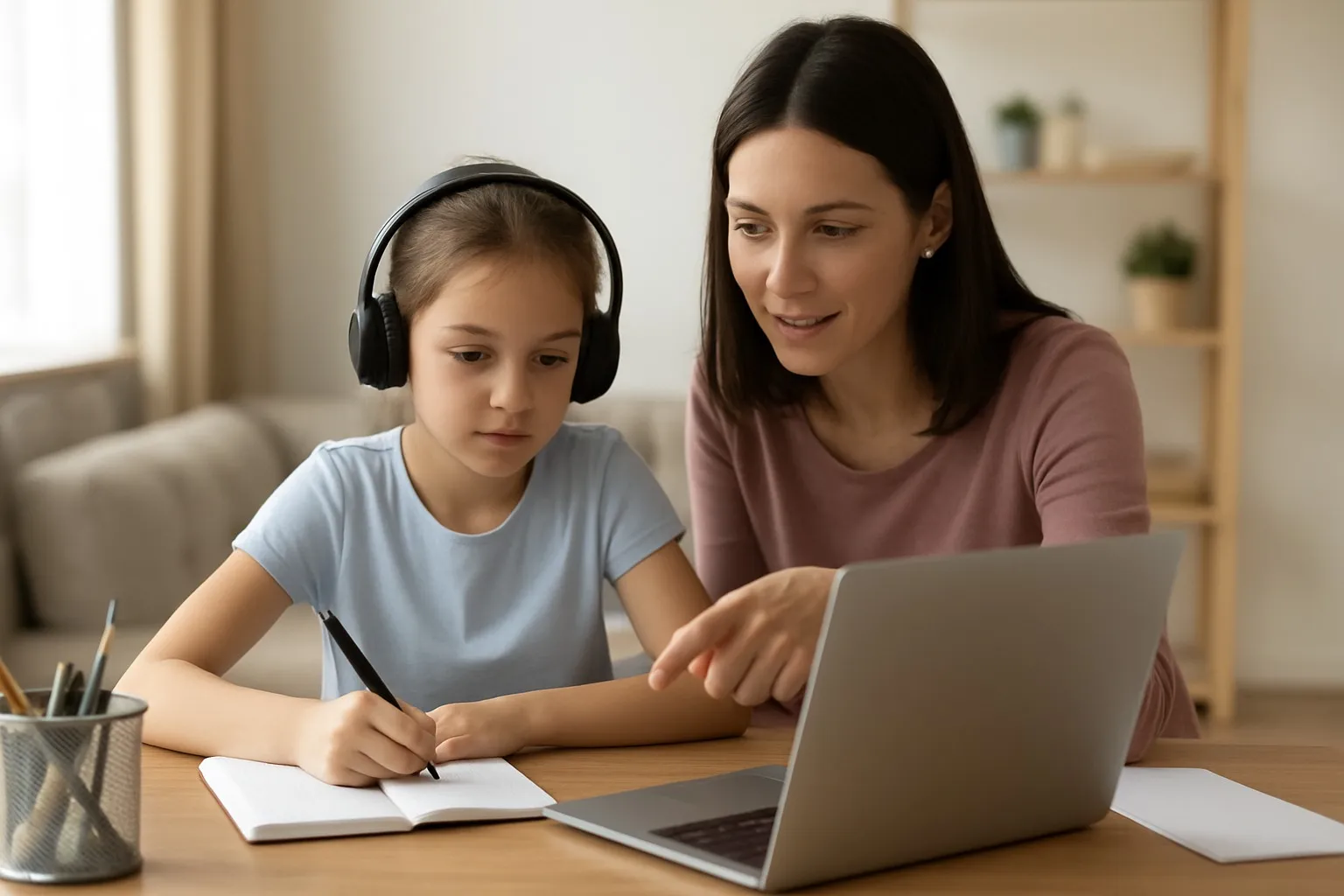Remote Learning Tips for Parents: A Complete Guide to Support Your Child’s Success
Remote learning has become a significant part of modern education, offering flexibility but also presenting challenges for families. For parents, supporting children in a digital learning environment requires patience, planning, and a clear strategy. In this comprehensive guide, we’ll provide practical remote learning tips for parents to create a structured, engaging, and productive environment for their children. From setting up a workspace to managing screen time, this article covers everything you need to know.

Understanding the Basics of Remote Learning
Before diving into strategies, parents must first understand what remote learning means. It’s not simply about children attending online classes; it’s about adapting to a new learning culture. Unlike traditional classrooms, students must rely heavily on self-discipline, while parents play the role of facilitators and motivators.
Different schools use various platforms like Google Classroom, Zoom, or Microsoft Teams. Familiarizing yourself with these tools helps you guide your child more effectively. By knowing the system, you’ll also minimize tech-related stress during school hours.
Why Parents’ Role Matters
Children look to parents for guidance, especially when adjusting to new routines. With proper support, kids can stay motivated and disciplined while learning from home.
Setting Up a Dedicated Learning Space
One of the most effective remote learning tips for parents is creating a dedicated workspace. Having a designated study area helps children focus better and separate school life from home life.
The space should be quiet, comfortable, and free from distractions like TV or loud household activities. Ensure that your child has a desk, ergonomic chair, proper lighting, and access to necessary supplies like notebooks, pens, and a reliable computer.
Checklist for an Effective Workspace
- Comfortable seating with good posture support
- Strong internet connection to avoid disruptions
- Good lighting, preferably natural light
- Organized supplies within reach
- Minimal distractions in the background
Establishing a Daily Routine
Just like traditional school, remote learning thrives on structure. Children feel more secure and focused when they follow a predictable daily schedule. Parents should help set clear school start and end times, meal breaks, and designated homework hours.
Encourage kids to wake up, dress, and prepare as if they were going to school physically. This mental shift promotes responsibility and discipline, reducing procrastination during class time.
Sample Daily Schedule
- 8:00 AM – Wake up and breakfast
- 9:00 AM – Online classes begin
- 12:00 PM – Lunch break
- 1:00 PM – Homework/assignments
- 3:00 PM – Physical activity or free time
- 7:00 PM – Review schoolwork
- 9:00 PM – Bedtime routine
Building Strong Communication with Teachers
Teachers are critical partners in remote learning. Parents should establish open lines of communication with educators to stay informed about assignments, expectations, and their child’s progress.
Don’t hesitate to ask for feedback or clarification when needed. By building a good relationship with teachers, parents can better support their children academically and emotionally.
Tips for Effective Communication
- Attend virtual parent-teacher meetings
- Check weekly updates from teachers
- Use email or chat platforms to ask questions
- Encourage your child to communicate directly with teachers
Encouraging Self-Motivation in Children
One of the biggest challenges of remote learning is keeping children motivated without direct supervision. Parents can support by teaching kids to set goals, manage their time, and celebrate achievements.
Motivation works best when children feel ownership of their learning process. Allow them to set personal goals for assignments and reward them when they complete tasks successfully.
Strategies to Boost Motivation
- Break large tasks into smaller, manageable steps
- Use positive reinforcement instead of punishment
- Celebrate small wins with praise or rewards
- Encourage curiosity and independent research
Managing Screen Time Effectively
While digital learning is necessary, excessive screen exposure can harm children’s health and concentration. Parents should create balanced routines that limit unnecessary recreational screen time outside school hours.
Encourage offline activities such as reading books, drawing, exercising, or engaging in family games. Maintaining a balance between online and offline time keeps children physically and mentally healthy.
Healthy Screen Habits
- Use the 20-20-20 rule: Every 20 minutes, look at something 20 feet away for 20 seconds
- Encourage outdoor play after school
- Monitor blue light exposure before bedtime
- Set device-free times during meals and family hours
Supporting Social Interaction and Emotional Health
Remote learning can sometimes feel isolating. Parents must prioritize their child’s emotional well-being by encouraging safe social interaction with peers and family.
Schedule virtual playdates, group study sessions, or family activities that promote bonding. Emotional support is just as important as academic success in building resilience and self-confidence.
Ways to Nurture Emotional Health
- Talk openly about your child’s feelings
- Encourage journaling or creative expression
- Promote mindfulness practices such as deep breathing
- Maintain regular physical activity for stress relief
Using Technology Wisely
Technology can either enhance or distract from remote learning. Parents must guide their children on responsible use of digital tools while also teaching online safety.
Introduce children to useful educational apps and platforms that make learning fun and interactive. At the same time, monitor their online activity to prevent distractions or exposure to harmful content.
Recommended Educational Tools
- Khan Academy for various subjects
- Duolingo for language learning
- Quizlet for flashcards and study games
- Google Scholar for research
Monitoring Progress and Providing Feedback
Parents should regularly review their child’s academic progress to ensure they’re staying on track. This doesn’t mean micromanaging every task but rather checking in consistently.
Providing constructive feedback builds confidence and helps children learn from mistakes without feeling discouraged. Encourage effort, not just results, to promote a growth mindset.
How to Track Progress
- Check assignment completion weekly
- Review grades and teacher comments
- Set monthly academic goals
- Celebrate milestones with encouragement
Preparing for Long-Term Remote Learning Success
Even as schools return to physical classrooms, remote learning skills will remain relevant in the digital age. Parents should focus on building long-term habits that help children succeed in both online and offline education.
Teach adaptability, self-discipline, and digital literacy as essential life skills. By preparing children for future learning environments, parents give them a competitive advantage in higher education and careers.
Future-Proofing Your Child’s Education
- Promote continuous learning beyond school hours
- Encourage critical thinking and problem-solving
- Foster digital literacy and online etiquette
- Build resilience to adapt to changing environments
Conclusion
Supporting children in remote learning requires patience, structure, and intentional effort. By applying these remote learning tips for parents, you can create a balanced and engaging educational experience for your child. From setting up a learning space to managing motivation, technology, and emotional well-being, every step contributes to long-term academic success. Remember, parents are not just facilitators - they are partners in their child’s educational journey. With the right strategies, remote learning can become an opportunity for growth, independence, and lifelong learning.











